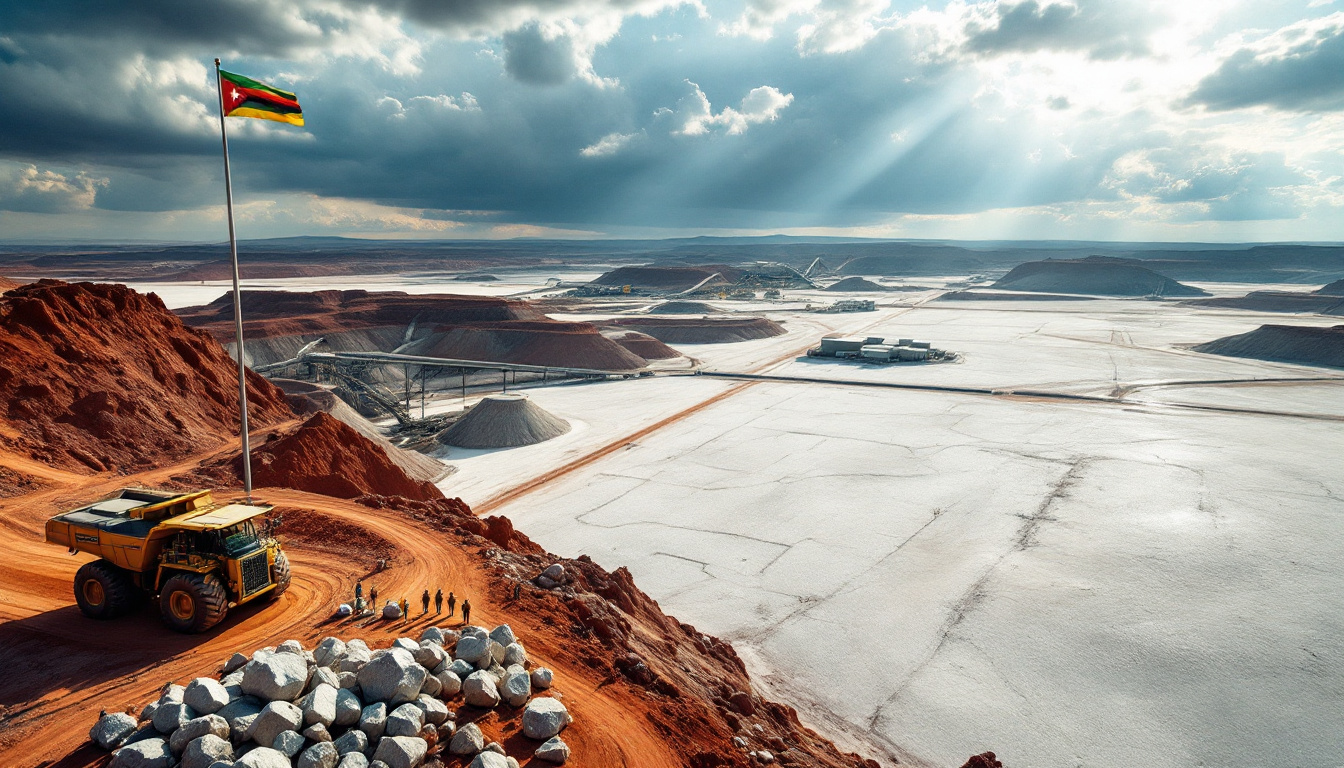What Changes Are Coming to Western Australia's Resources Department?
The Western Australian Government has announced significant structural changes to the Department of Energy, Mines, Industry Regulation and Safety (DEMIRS). This strategic restructuring will split the department into two separate agencies with distinct responsibilities, marking a new era for resource management in the state.
The first new entity will be the Department of Mines, Petroleum and Exploration (DMPE), which will focus exclusively on resource sector development and administration. The second will be the Department of Local Government, Commerce, Industry Regulation and Safety, which will handle broader regulatory functions.
This division represents more than just an administrative shuffle—it signals Western Australia's commitment to strengthening its position as a global mining powerhouse. With a phased implementation timeline spanning six months (July 1-December 31, 2025), the government is allowing for a systematic transition between the current structure and the new departmental organization.
Perhaps most notably, this marks the first time "Exploration" has been included in a WA resources department title, highlighting the government's recognition of this sector's critical importance to the state's economic future.
Why Is Western Australia Restructuring Its Resources Department?
Economic Resilience in Uncertain Times
The restructuring comes as part of nine comprehensive reforms to WA Government departments following the recent state election. These changes are strategically designed to drive economic resilience during globally uncertain times.
"Today's reforms are about creating a Team WA approach at all levels of government, so that we can relentlessly pursue the priorities of the WA community – creating jobs, building capacity in our hospitals and building more houses," stated WA Premier Roger Cook.
The resources sector currently contributes approximately 47% of Western Australia's GDP, making it the backbone of the state's economy. By creating specialized departments, the government aims to enhance efficiency in a sector that's vital to WA's continued prosperity.
Industry experts note that this restructuring isn't occurring in isolation—it comes amid an 18% year-over-year increase in critical minerals exploration licenses (2023-2024), reflecting growing demand for resources essential to mining's crucial and paradoxical role in the clean energy transition.
Renewed Focus on Resources and Exploration
The new Department of Mines, Petroleum and Exploration will have a specialized mandate that places greater emphasis on exploration activities. This focus is timely, considering International Energy Agency projections that global energy transition will require a 400% increase in key minerals by 2040.
The addition of "Exploration" to the department's name sends a clear message about priorities. As AMEC CEO Warren Pearce noted: "The decision to add Exploration to the title for the first time is also critical recognition of the West Australian exploration and junior minerals sector, that is so important to the discovery of future minerals and the development of new mining projects."
This rebrand also acknowledges the vital work of the WA Geological Survey, which undertakes important exploration programs on behalf of the state and contributes significantly to future mineral discoveries.
How Will the Department Split Benefit Western Australia's Resources Sector?
Enhanced Industry Focus and Specialization
The restructuring creates two agencies with clearly defined responsibilities, allowing each to develop deeper expertise without the competing priorities of a larger, combined department.
According to an AMEC 2024 poll, approximately 73% of surveyed mining executives support this type of regulatory specialization. Similar reforms in other jurisdictions have demonstrated that specialized agencies can achieve up to 31% faster approval times for resource projects.
The DMPE is expected to implement a new compliance framework featuring digital transformation in mining innovations, automated environmental impact assessments, and advanced tracking technologies. These innovations aim to streamline processes while maintaining rigorous standards.
Industry Support and Recognition
The Association of Mining and Exploration Companies has publicly supported these reforms, recognizing their potential to boost sector performance and innovation.
"AMEC welcomes today's decision by the Western Australian Government to return the Department back to its focus on the resources sector, shedding the broader responsibilities of commerce and industry regulation," said AMEC Chief Executive Officer Warren Pearce.
With this restructuring, the WA government has set an ambitious target of facilitating 50 new exploration projects by 2026. This goal aligns with Western Australia's broader economic diversification strategy, which seeks to maintain the state's competitive edge in the global resources market.
By creating a department with "Exploration" in its name, the government is also addressing the unique challenges and opportunities facing navigating junior mining investments, which often struggle with regulatory complexity but drive much of the sector's innovation.
What Does This Mean for Energy Policy in Western Australia?
Strategic Energy Priorities
The restructuring places energy policy "front and center" according to the WA Government. This reflects the administration's recognition of the complex interplay between resource extraction, energy production, and environmental stewardship.
Premier Cook emphasized that these reforms acknowledge "how important affordable, secure and lower carbon energy is to maintaining WA's status as the fastest-growing economy in the nation."
Western Australia has set ambitious targets, aiming for 50% renewable energy by 2030 and allocating approximately $3.4 billion for critical minerals processing between 2025-2030. Additionally, the state has established hydrogen export targets of 100MW production by 2026, contributing significantly to Australia's clean energy revolution in mining.
Integrated Resource-Energy Planning
The new departmental structure will facilitate an integrated resource-energy planning framework that coordinates mineral availability mapping, energy infrastructure requirements, and renewable integration pathways.
This holistic approach recognizes that modern mining operations require both traditional and renewable energy sources, and that the minerals being extracted often play crucial roles in clean energy technologies.
The WA Geological Survey will play an expanded role in this integrated approach, providing vital data on mineral deposits that could support both traditional resource development and the clean energy transition.
Industry experts note that this coordination between resource extraction and energy policy could position Western Australia as a global leader in responsible resource development during a critical period of energy transition.
When Will These Changes Take Effect?
The implementation of these reforms will follow a structured timeline, with an $18.7 million transition budget allocated to ensure a smooth process. The changes will unfold in three distinct phases:
- Legal separation (beginning July 1, 2025)
- Systems migration (Q3 2025)
- Full operational independence (by December 31, 2025)
This phased approach allows for careful transition management, minimizing disruption to ongoing operations and providing stakeholders with clear expectations about implementation timelines.
The government has indicated that detailed transition plans will be released in early 2025, including staff retraining programs and stakeholder consultation processes to ensure all voices are heard during this significant organizational change, according to the Western Australian Government's official announcement.
What Other Government Reforms Are Being Implemented?
The DEMIRS restructuring is part of a broader set of nine reforms to WA Government departments following the recent state election. These collective changes aim to create jobs in globally uncertain times, back the resources sector, diversify the economy, and support local manufacturing.
While specific details of the other reforms weren't fully outlined in the announcements, they form part of Premier Cook's "Team WA approach" strategy, designed to align government efforts across departments and levels.
These reforms represent the most significant restructuring of Western Australia's public sector in recent years, demonstrating the government's commitment to organizational effectiveness and economic resilience, as reported by The West Australian.
FAQs About Western Australia's Resources Department Changes
Why is the Western Australian Government restructuring its resources department?
The restructuring aims to create more focused agencies that can better support economic resilience, drive development in the resources sector, and place greater emphasis on exploration activities crucial for discovering future mineral resources. This specialized approach is expected to improve efficiency and effectiveness in supporting WA's resource-driven economy.
What will the new Department of Mines, Petroleum and Exploration (DMPE) be responsible for?
The DMPE will administer and drive the future development of Western Australia's resources industry, with a particular focus on mining, petroleum, and exploration activities. It will implement new digital systems for approvals, coordinate with energy policy initiatives, and work closely with the WA Geological Survey to support mineral discovery and development.
How do these changes benefit the exploration sector?
The inclusion of "Exploration" in the department name provides official recognition of the exploration sector's importance to Western Australia's economy and future mineral discoveries. This signals increased support and focus on exploration activities, potentially leading to streamlined approval processes, enhanced geological data availability, and greater policy attention to the unique needs of exploration companies.
When will these departmental changes be fully implemented?
The reforms will take effect on July 1, 2025, with full implementation expected by December 31, 2025. The process will follow three phases: legal separation, systems migration, and full operational independence, with a dedicated transition budget of $18.7 million to ensure minimal disruption to services.
How has the mining industry responded to these changes?
The Association of Mining and Exploration Companies (AMEC) has publicly supported the reforms, welcoming the renewed focus on the resources sector and the recognition of the exploration industry's importance. Industry surveys indicate strong support among mining executives for more specialized regulatory frameworks that can better address sector-specific challenges and opportunities, especially for those seeking a beginner's guide to understanding mining drilling results.
Want to Know When the Next Major Mineral Discovery Happens?
Stay ahead of the market by receiving instant notifications when significant mineral discoveries are announced on the ASX. Visit Discovery Alert's discoveries page to see how major discoveries have historically delivered exceptional returns, all powered by our proprietary Discovery IQ model that transforms complex data into actionable investment opportunities.




